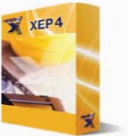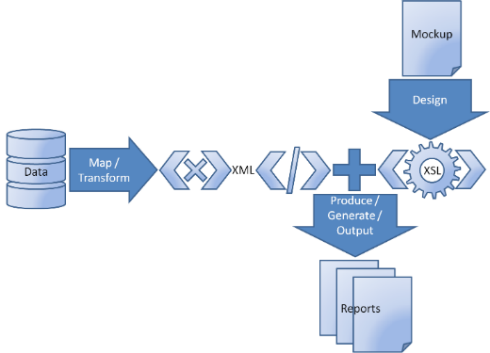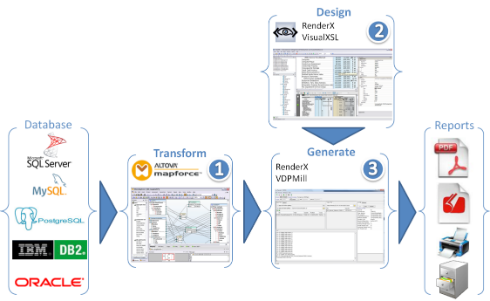
Database Reporting Software |
||||
|
RenderX software can be used to dynamically generate reports from databases for display to a user on the web, as a document inside a business system workflow, or to stream that data to printers for mailings such as bills and statements. |
||||
|
In order to produce easy to use, expressive reports with charts, tables, and textual descriptions out of a |
||||
|
When XEP Server is installed on customer's Java Application Server, Java Servlet (provided in the Integration & Connectivity Kit) connects XEP server to the customer's application program. The component calls the database, retrieves the data, submits it to XEP via the servlet and then serves the generated report in PDF to the user. XEP automatically generates text, tabular data and business graphics from the same source formatted in accordance to the customer's stylesheet. The server simultaneously serves multiple users and handles concurrent queries. |
||||
|
Alternatively our products could facilitate building customized selections out of large quantity of available items and print them for easy reference (e.g. customized schedules for an attendee of conference with several concurrent tracks). |
||||
|
An application that allows building customized selections (e.g. customized schedules) needs to be installed on the computers used for this task (e.g., PCs available in the conference lobby). These computers need to have access to the active folder of EnMasse:Actinia, installed on a separate server in the same network. Users create their selections, and the program passes them through EnMasse. They receive their selections in PDF and can then save their selections in PDF or print them. |
||||
Using RenderX products with Altova MapForce for database reporting |
||||
|
|
Companies often store their data in databases, such as Oracle Database, PostgreSQL, IBM DB2, Microsoft SQL Server, and MySQL. The primary input for RenderX's formatting engine is XML, however. While some may think that it will be difficult to use these technologies in one business application, we believe that RenderX formatting engine can be used with any structured data. Because the data is structured, all you need is to define rules which translate (or map) one format to another. In general, the process of generating reports using RenderX's XML-to-print formatter (PDF, PostScript, AFP, and other supported outputs) from data that resides in a database can be represented by the diagram below:
RenderX provides solutions for steps 2 and 3 above. Users only need to choose an application that will do database-to-XML mapping. Since XML is an open standard, any application that supports XML output from a database can be used. For example, Altova MapForce provides a graphical database mapping solution that can be used together with RenderX products, such as VisualXSL and VDPMill, to create a complete database reporting solution which includes a GUI-based report designer and a high-performance formatting platform. Using Altova MapForce, RenderX VisualXSL and VDPMill, this simple process of generating reports from database can be defined with more details:
A similar procedure can be used for flat files, EDI, Excel 2007+, XBRL, and Web services, or for designing reports that aggregate data from different sources. |
|||





